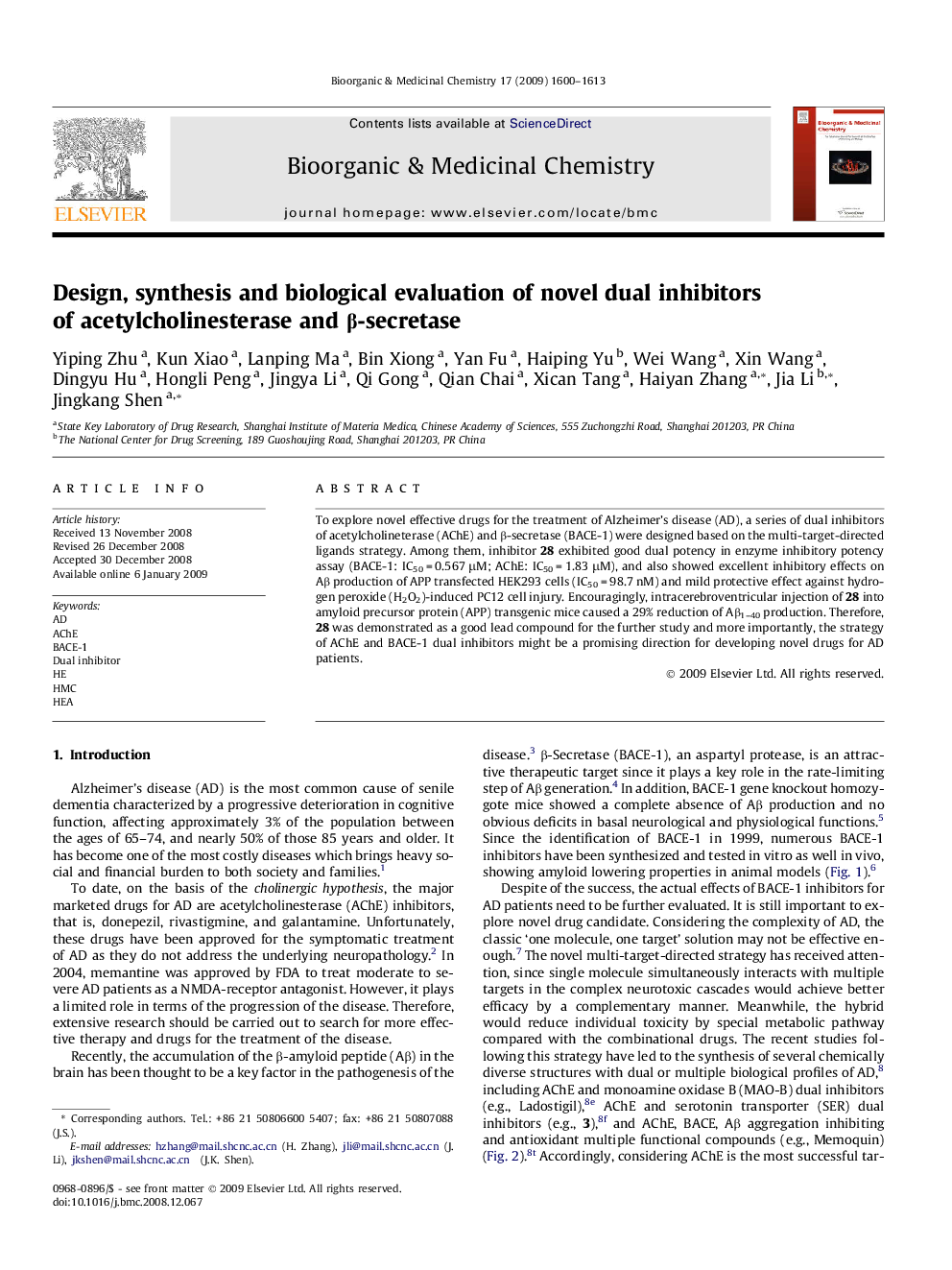| کد مقاله | کد نشریه | سال انتشار | مقاله انگلیسی | نسخه تمام متن |
|---|---|---|---|---|
| 1360206 | 981428 | 2009 | 14 صفحه PDF | دانلود رایگان |

To explore novel effective drugs for the treatment of Alzheimer’s disease (AD), a series of dual inhibitors of acetylcholineterase (AChE) and β-secretase (BACE-1) were designed based on the multi-target-directed ligands strategy. Among them, inhibitor 28 exhibited good dual potency in enzyme inhibitory potency assay (BACE-1: IC50 = 0.567 μM; AChE: IC50 = 1.83 μM), and also showed excellent inhibitory effects on Aβ production of APP transfected HEK293 cells (IC50 = 98.7 nM) and mild protective effect against hydrogen peroxide (H2O2)-induced PC12 cell injury. Encouragingly, intracerebroventricular injection of 28 into amyloid precursor protein (APP) transgenic mice caused a 29% reduction of Aβ1–40 production. Therefore, 28 was demonstrated as a good lead compound for the further study and more importantly, the strategy of AChE and BACE-1 dual inhibitors might be a promising direction for developing novel drugs for AD patients.
Novel dual inhibitors of acetylcholinesterase and β-secretase were design, synthesis and biological evaluation. Among them, compound 28 exhibited good dual potency in enzyme inhibitory potency assay (BACE-1: IC50 = 0.567 μM; AChE: IC50 = 1.83 μM), and also showed excellent inhibitory effects on Aβ production of APP transfected HEK293 cells (IC50 = 98.7 nM) and mild protective effect against hydrogen peroxide (H2O2)-induced PC12 cell injury. Encouragingly, intracerebroventricular injection of 28 into amyloid precursor protein (APP) transgenic mice caused a 29% reduction of Aβ1–40 production.Figure optionsDownload as PowerPoint slide
Journal: Bioorganic & Medicinal Chemistry - Volume 17, Issue 4, 15 February 2009, Pages 1600–1613